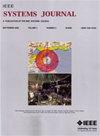基于神经元连通性的改进GBNN引导多机器人覆盖搜索
IF 4.4
3区 计算机科学
Q1 COMPUTER SCIENCE, INFORMATION SYSTEMS
引用次数: 0
摘要
未知环境下的多机器人覆盖搜索问题引起了人们的广泛关注。然而,现有的方法在搜索过程中效率低下。本研究的目的是通过一种增强的生物神经网络方法来提高搜索效率。在这项工作中,引入了一个连接的Glasius生物启发神经网络(CGBNN)模型,以解决现有研究中缺乏考虑神经元连接和传递特性的问题。动态搜索环境由神经元活动值的变化来表示,神经元活动值的变化指导机器人执行搜索任务。每个机器人根据CGBNN活动值梯度递减的原则自动规划自己的搜索路径,直到任务完成。实验结果表明,机器人可以避开不同类型的障碍物完成覆盖搜索,验证了所提方法的有效性。与GBNN、A-RPSO和DMPC算法相比,该方法的覆盖率分别提高了6.90%、6.22%和4.02%。此外,决策时间受环境复杂性影响较小,满足了大规模复杂环境下实时决策的实际需求。本文章由计算机程序翻译,如有差异,请以英文原文为准。
Improved GBNN Guided Multirobot Coverage Search Based on Neuronal Connectivity
The multirobot coverage search problem in unknown environments has attracted significant attention. However, the existing methods are inefficient in the search process. The aim of the present study is to improve the search efficiency through an enhanced bioinspired neural network method. In this work, a connected Glasius bioinspired neural network (CGBNN) model is introduced to address the lack of consideration for neuronal connectivity and transmission properties in existing studies. The dynamic search environment is represented by the changes in neurons' activity values, which guide the robots in performing the search task. Each robot automatically plans its search path according to the principle of the decreasing gradient of CGBNN activity values until the task is completed. Experimental results demonstrate that the robots can avoid different types of obstacles to complete the coverage search, confirming the effectiveness of the proposed method. Meanwhile, it indicates that the proposed method outperforms others, the coverage rate is improved by 6.90%, 6.22%, and 4.02% compared to the GBNN, A-RPSO, and DMPC algorithms, respectively. In adition, the decision time is less affected by the complexity of the environment, which fulfills the practical demands of real-time decision-making in a large-scale complex environment.
求助全文
通过发布文献求助,成功后即可免费获取论文全文。
去求助
来源期刊

IEEE Systems Journal
工程技术-电信学
CiteScore
9.80
自引率
6.80%
发文量
572
审稿时长
4.9 months
期刊介绍:
This publication provides a systems-level, focused forum for application-oriented manuscripts that address complex systems and system-of-systems of national and global significance. It intends to encourage and facilitate cooperation and interaction among IEEE Societies with systems-level and systems engineering interest, and to attract non-IEEE contributors and readers from around the globe. Our IEEE Systems Council job is to address issues in new ways that are not solvable in the domains of the existing IEEE or other societies or global organizations. These problems do not fit within traditional hierarchical boundaries. For example, disaster response such as that triggered by Hurricane Katrina, tsunamis, or current volcanic eruptions is not solvable by pure engineering solutions. We need to think about changing and enlarging the paradigm to include systems issues.
 求助内容:
求助内容: 应助结果提醒方式:
应助结果提醒方式:


